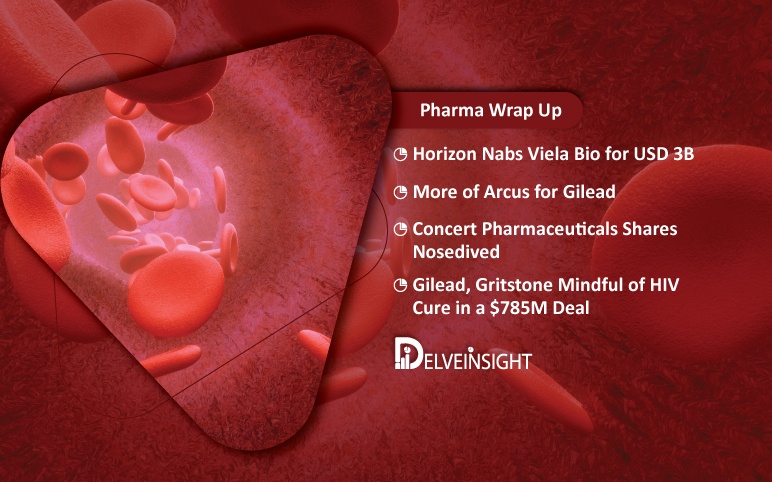Metastatic Pancreatic Cancer Market Size: Emerging therapies, Unmet needs and Forecast analysis
Nov 08, 2019
Table of Contents
Pancreas is a gland which has two components exocrine component and endocrine component. The exocrine component which is responsible for making proteins/ enzymes and releasing them into small intestines for easy digestion.
On the other hand, the endocrine component of the pancreas is responsible for making hormones and regulating the body’s metabolism.
According to the World Cancer Research Fund International, Pancreatic cancer is the 12th most commonly occurring cancer in men and the 11th most in women.
Downloads
Click Here To Get the Article in PDF
Metastatic Pancreatic Cancer Epidemiology
As per the American’s Cancer Society Cancer Facts and Figures report, by the end of the year 2019, over 56,700 Americans will be diagnosed with pancreatic cancer. The pancreatic cancer diagnosis rate has observed a 2% increase from the last year.
Similarly according to a study conducted by Hall et al. an analysis of the clinical trials over past thirty years in the US showed that approximately 84% of the clinical trials were of metastatic pancreatic cancer and around 16% cases had locally advanced pancreatic cancer.
The Cancer Research UK says that pancreatic cancer is the 11th most common cancer in the United Kingdom, which accounts for three per cent of all new cancer cases. A review by Carrato et al., titled says that 80–90% of patients have an unresectable tumour on diagnosis at an advanced stage in Europe.
Often times, the pancreatic cancer diagnosis is difficult owing to no standard, cost-effective diagnostics tool. This results in the delayed screening of pancreatic cancer, which eliminates surgical removal of the tumour as a viable option. By the time, the pancreatic cancer is diagnosed, it has had spread all over in the body.
Metastatic Pancreatic cancer has the lowest survival rate of all the commonly occurring cancers.

According to a study CONCORD-3, Pancreatic cancer has the lowest five-year survival of around 6.9% in the UK.
As per the estimates presented by Cancer.net, if the pancreatic cancer is detected at early stages the possible chances of 5-year survival rate is 34%. The sad part is that only 10% of the patients are diagnosed at stage I. The moment, pancreatic cancer spreads to surrounding parts of the body, the 5-year survival rate reduces to 12%. Whereas, in the case of the tumour spreading to distant parts of the body, the rate swoops down to 3%.
Pancreatic cancer is the seventh leading cause of deaths. And, its toll is rising.
Around 45,750 deaths are expected to be reported due to pancreatic cancer this year. In America, a survey revealed that deaths due to pancreatic cancer surpassed breast cancer. Unfortunately, soon a day will come when the pancreatic cancer death ratio will overtake colorectal cancer.
Metastatic Pancreatic Cancer Therapeutics landscape
Pancreatic cancer treatment landscape depends on the stage and location of cancer. To sum up, the primary aim of the treatment is always the elimination of tumour. In case, the that is not possible, the focus revolves around improving the quality life of the patients and preventing the growth of the tumour.
PresentMetastatic Pancreatic Cancer Therapies
Pancreatic cancer treatment market comprises surgery, targeted therapy, radiation therapy, chemotherapy, immunotherapy and many times a combination of therapies.
However, in case of metastasized or locally metastatic pancreatic cancers, surgically removal of the cancer is not an option. In those cases, palliative or supportive care is given to pancreatic cancer patients to provide the best comfort and relieve symptoms and pain.
Chemotherapy
Chemotherapy is a commonly preferred option for Metastatic Pancreatic Cancer. At present, the standard chemotherapy drug for metastatic pancreatic cancer treatment is Gemzar (Gemcitabine). Gemzar, approved in the year 1996, is, thus, considered an effective Pancreatic cancer treatment option. However, there are some associated side-effects like fever, infection, and elevation of liver enzymes are usually transient and easily manageable.
Erlotinib prevents the growth of the tumour by blocking the epidermal growth factor receptor (EGFR). As a result, the US FDA granted approval to Erlotinib (Tarceva) manufactured by OSI Pharmaceuticals in 2004 as the first-line treatment of locally advanced, unresectable or metastatic pancreatic cancer in combination with gemcitabine. General side effects include skin rash similar to acne, diarrhoea, and fatigue.
Targeted Therapy
There exists a treatment method which targets a specific genetic change in the genome. Larotrectinib (Vitrakvi) has been approved for pancreatic cancer which has NTRK fusion as its cause.
These agents are targeted agents but other chemotherapeutic agents, like Nab‐paclitaxel (Abraxane), Oxaliplatin (Eloxatin), Nanoliposomal irinotecan (Onivyde), Irinotecan (Camptosar), and others are also used as first‐line, second‐line, and off‐label chemotherapeutic agents for locally advanced or metastatic pancreatic cancer patients. However, these agents are associated with major side effects.
Radiation Therapy
Metastatic Pancreatic cancer radiation therapy is employed to kill the cancerous cells via radiation in the form of X-rays.
A painless and well-planned pancreatic cancer treatment option harms as little as possible to other healthy body tissue. In the case of locally Metastatic pancreatic cancer, radiation therapy is usually administered with chemotherapy.
Unmet needs in the Metastatic Pancreatic Cancer therapy market
The current Pancreatic cancer therapy market is dependent on the chemotherapeutic agents and targeted agents. However, due to various side effects, there is a high demand for standard and efficient therapies that cause minimal to no side effects.
Several companies are working to bring novel, innovative therapies in the Pancreatic cancer therapeutics market.
Companies influencing Metastatic Pancreatic Cancer market
Key Metastatic pancreatic cancer pharma players such as AB Science, Rafael Pharma, Eleison Pharmaceuticals, Syncore Biotechnology, and others are developing therapies for the treatment of patients with Metastatic Pancreatic Cancer. Masitinib (AB Science), CPI‐613 (Rafael Pharma), Glufosfamide (Eleison Pharmaceuticals), EndoTAG (SB05) (Syncore Biotechnology) along with other compelling treatment options in the clinical trials is expected to increase the overall market size of Metastatic Pancreatic Cancer.

Metastatic Pancreatic Cancer Pipeline products
Devimistat
CPI‐613, also known as devimistat, is in Phase III clinical trials by the company Rafael Pharma. This is a lipoate analogue targeting mitochondrial tricarboxylic acid (TCA). The US FDA designated CPI‐613 as an orphan drug for pancreatic cancer treatment. Another combination study of devimistat with mfolfirinox and gemcitabine with nab‐paclitaxel is ongoing in different phases of a clinical trial. The drug has also received approval for pivotal clinical trials in pancreatic cancer.
Masitinib
Another agent, Masitinib is a selective tyrosine kinase inhibitor. Moreover, masitinib has also received orphan drug designation for pancreatic cancer from both the European Medicine Agency (EMA) and the US FDA. It is currently in Phase III clinical trial for development of Locally Advanced or Metastatic Pancreatic Cancer Treatment.
Glufosfamide
A widely used chemotherapeutic agent, Glufosfamide (ifosfamide), is used with greater specificity and a better safety profile, targeting metabolically active tumors and hypoxic tumour regions. The therapy is currently being used on patients who were previously administered with Gemcitabine.
At present in Phase III trials, Eleison owns exclusive worldwide rights to glufosfamide, but has sublicensed marketing rights to leading pharmaceutical companies in China and South Korea for the Chinese and South Korean Pancreatic cancer therapy markets.
EndoTAG‐1
EndoTAG‐1 (SB05), an innovative composition of the established cytostatic drug paclitaxel combined with neutral and positive lipids, is in Phase III trials. SB05 is expected to prevent the formation of new tumour blood vessels and inhibits tumour growth in patients with Metastatic Pancreas Cancer.
Metastatic Pancreatic Cancer Market forecast analysis
The advancement in the medical sectors has helped the metastatic pancreatic cancer patient pool to find an effective cure in the form of various therapies that promise to kill the tumour from its root. Pancreatic therapies that can successfully target cancer depending upon the reason behind the origin of the tumour will surely expand the Metastatic pancreatic cancer market size.
The launch of upcoming therapies such as Devimistat (Rafael Pharmaceuticals), Masitinib (AB Science), Glufosfamide (Eleison Pharmaceuticals), EndoTAG‐1 and (Syncore Biotechnology) are some of the potential upcoming therapies which will soon compete to grab the major chunk of Metastatic Pancreatic Cancer market share.
In conclusion, the progress in the medical sector, the development of innovative diagnostics tools, rising metastatic pancreatic cancer prevalence, increasing awareness among people, and upcoming pipeline therapies will advance the metastatic pancreatic cancer market forward.



